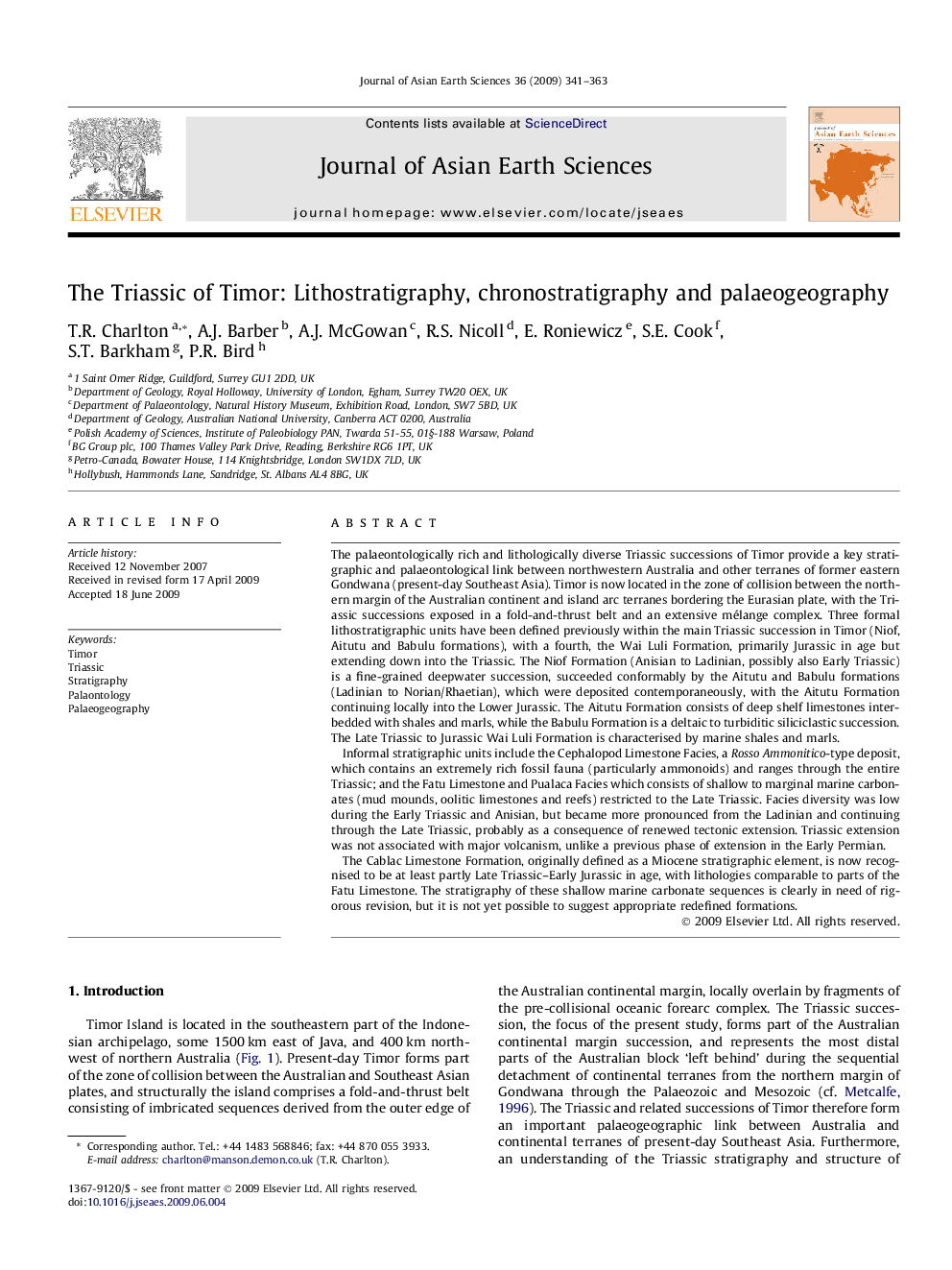| کد مقاله | کد نشریه | سال انتشار | مقاله انگلیسی | نسخه تمام متن |
|---|---|---|---|---|
| 4732314 | 1640428 | 2009 | 23 صفحه PDF | دانلود رایگان |

The palaeontologically rich and lithologically diverse Triassic successions of Timor provide a key stratigraphic and palaeontological link between northwestern Australia and other terranes of former eastern Gondwana (present-day Southeast Asia). Timor is now located in the zone of collision between the northern margin of the Australian continent and island arc terranes bordering the Eurasian plate, with the Triassic successions exposed in a fold-and-thrust belt and an extensive mélange complex. Three formal lithostratigraphic units have been defined previously within the main Triassic succession in Timor (Niof, Aitutu and Babulu formations), with a fourth, the Wai Luli Formation, primarily Jurassic in age but extending down into the Triassic. The Niof Formation (Anisian to Ladinian, possibly also Early Triassic) is a fine-grained deepwater succession, succeeded conformably by the Aitutu and Babulu formations (Ladinian to Norian/Rhaetian), which were deposited contemporaneously, with the Aitutu Formation continuing locally into the Lower Jurassic. The Aitutu Formation consists of deep shelf limestones interbedded with shales and marls, while the Babulu Formation is a deltaic to turbiditic siliciclastic succession. The Late Triassic to Jurassic Wai Luli Formation is characterised by marine shales and marls.Informal stratigraphic units include the Cephalopod Limestone Facies, a Rosso Ammonitico-type deposit, which contains an extremely rich fossil fauna (particularly ammonoids) and ranges through the entire Triassic; and the Fatu Limestone and Pualaca Facies which consists of shallow to marginal marine carbonates (mud mounds, oolitic limestones and reefs) restricted to the Late Triassic. Facies diversity was low during the Early Triassic and Anisian, but became more pronounced from the Ladinian and continuing through the Late Triassic, probably as a consequence of renewed tectonic extension. Triassic extension was not associated with major volcanism, unlike a previous phase of extension in the Early Permian.The Cablac Limestone Formation, originally defined as a Miocene stratigraphic element, is now recognised to be at least partly Late Triassic–Early Jurassic in age, with lithologies comparable to parts of the Fatu Limestone. The stratigraphy of these shallow marine carbonate sequences is clearly in need of rigorous revision, but it is not yet possible to suggest appropriate redefined formations.
Journal: Journal of Asian Earth Sciences - Volume 36, Issues 4–5, 18 October 2009, Pages 341–363